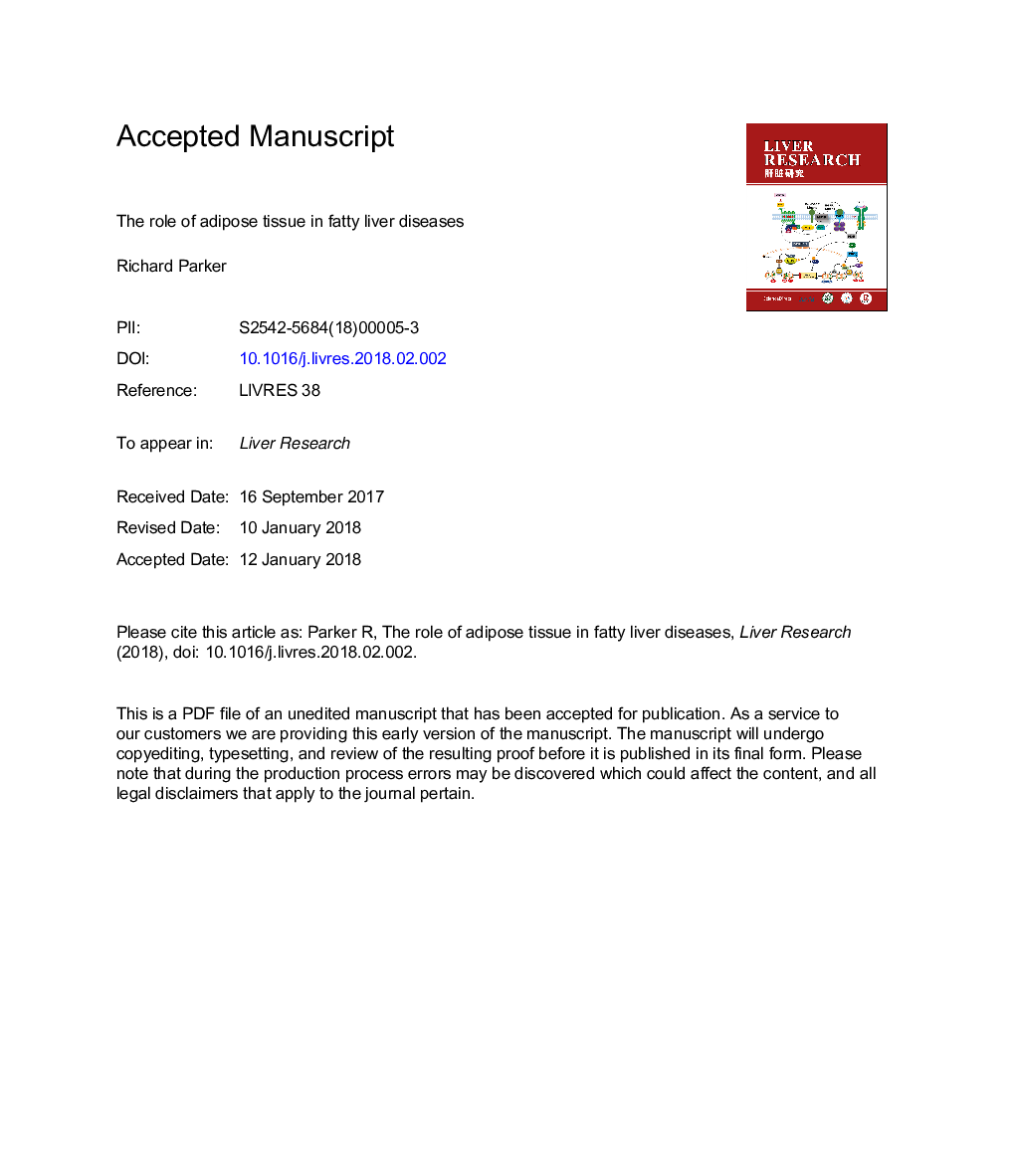| Article ID | Journal | Published Year | Pages | File Type |
|---|---|---|---|---|
| 8925919 | Liver Research | 2018 | 26 Pages |
Abstract
Fatty liver disease is almost always a consequence of obesity or alcohol abuse. In both cases significant changes to adipose tissue (AT) occur, which are remarkably similar despite their different causes. Hypertrophic and hypoxic adipocytes develop an inflammatory phenotype and become necrotic, secreting inflammatory cytokines into circulation, principally but not limited to tumor necrosis factor (TNF) α. The secretion of adipokines is altered in obesity and alcohol abuse. Fatty acids, instead of being stored in adipocytes are delivered to the liver. These multiple pathways of adipose-liver crosstalk contribute to the development and progression of liver disease: TNFα induces hepatocyte death and modulates hepatic immune function. Fatty acids promote hepatic steatosis and are pro-inflammatory, whilst adipokines mediate and exacerbate liver injury, for example leptin enhances fibrotic responses to injury. In non-alcoholic fatty liver disease (NAFLD) reducing adipose inflammation through weight loss or thiazolidinediones (TZDs) both improve liver injury. Experimental data that suggest that this might also be of benefit in alcoholic liver disease (ALD) but human studies are lacking at present.
Keywords
Related Topics
Health Sciences
Medicine and Dentistry
Hepatology
Authors
Richard Parker,
